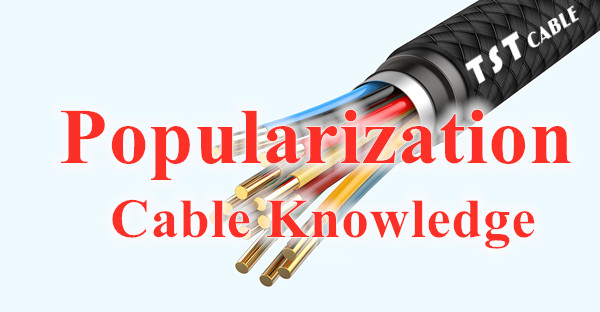
Cross-linked insulation has come to dominate power cables, replacing oil-paper insulation and gradually replacing PVC plastic insulation. Although there are many cross-linked insulations, they are mainly categorized into physical and chemical cross-linking, and their insulation quality is really consistent.
1. Physical cross-linking physical cross-linking, also known as irradiation cross-linking, good insulation quality, high degree of cross-linking, good weather resistance. Is a variety of soft wire, equipment line, high temperature (105c and above), flame retardant wire and cable ideal process. Its main disadvantage is that the irradiation is not uniform, repeated irradiation in the production, the cable bends too many times, the insulation is easy to inject a space charge, is not suitable for wire production.
2. Chemical crosslinking chemical crosslinking is divided into high temperature and low temperature two crosslinking methods, including high temperature crosslinking steam and dry crosslinking. Steam crosslinking because of its insulation water content of 2000×10-6, insulation quality is poor, it is indeed eliminated; dry crosslinking insulation water content (1OO-200) x 10-6 has been widely used in lo-500kV cable. Low-temperature crosslinking, the scientific name of silane crosslinking, cable crosslinking in 70cc-90c warm water or air with high humidity, also known as warm water crosslinking. After the crosslinking agent (silane) absorbs water, the linear structure of PE insulation can react to a reticulated crosslinked structure. The absorbed water has become part of the insulation molecules, so the water content is very small, also x10-6 (100-200). The insulation quality is the same as dry cross-linking, and the insulation performance exceeds that of method cross-linking. Warm water cross-linking is generally applicable to cables of 10kV and below, especially UKV warm water cross-linking cable. Good product quality, low investment in equipment and fast production speed make it an ideal cable product.
Product advantages of irradiated cross-linked cable:
1, irradiated cross-linked low smoke halogen-free control cable has excellent mechanical and physical properties, good resistance to environmental stress cracking.
2, resistant to various chemical solvents, more stable in the surrounding corrosive media.
3, irradiated crosslinked low smoke halogen-free control cables have stable electrical performance and insulation properties.
4, the heat resistance of the wire is good, the long-term working temperature reaches 90 ℃ – 135 ℃.
5, the cable has a large current-carrying capacity and strong overload capacity.
6, low-smoke halogen-free cable products do not contain halogen elements, combustion does not produce hydrogen chloride and other toxic and corrosive gases.
7, small amount of smoke when burning, long visual distance, fire, can ensure that people who are not familiar with the scene have a chance to escape.
The current crosslinking technologies are:
Two-step method; copolymer production method; Monosil one-step method and derivation of the other two process methods; solid-phase one-step method and co-mingling method has seven kinds of raw process. When purchasing cables, we should familiarize ourselves with the above knowledge in order to obtain high quality products.
3. Purchase and select cross linked cables.
Cross linked cable insulation quality is high, frequency breakdown strength up to 50kV/mm, Tan6 is only 5×10-4, dielectric constant is 2.3, is the ideal cable insulation. At the same time, the working temperature of cross-linked cable is up to 90c, with good heat resistance and weather resistance, with high mechanical properties and corrosion resistance. Low and medium cable products are basically cross-linked cables. Although the process of cross-linked cables is different, the insulation quality is really the same.
The selection of the different types of cables commonly used is described:
(1) 1kV three-core aluminum core 70mm crosslinked polyethylene insulated PVC sheathed steel tape pin-mounted cable, model YJLV22-0.6/1.3×70:The crosslinked insulation (YJ) in this model can be used in any crosslinking process, but it is preferable to use warm water crosslinking. If dry cross-linking is used, the equipment investment is large and the production speed is slow. If the cable cross-section is small, the cable will be drawn thin or broken in the huge production line. Procurement should be considered:Smaller cross-section of aluminum core cables should not be cross-linked, warm water cross-linking is more flexible.
(2) 10kV three-core copper-core 120mm cross-linked polyethylene insulated PVC sheathed steel tape pin-mounted cable, type YJV22-8.7/10.3 × 120:10kV class cable cross-section is generally larger, especially copper-core cables, can not be irradiation crosslinking process. In addition to the excessive number of cable bends that tend to damage the cable, the accumulation of space charge in the insulation reduces the insulation quality. At present, 10kV class cable is suitable for dry crosslinking production process, stable product quality and reasonable price. However, if the cable batch is small, specification changes, dry crosslinking scrap rate is high, small cross-section of the cable is easy to break, should be used warm water crosslinking. Warm water crosslinking belongs to the category of low temperature crosslinking, no insulation thermal stress, insulation quality. In order to eliminate the misunderstanding of warm water crosslinking certain water content, with the discovery of new materials for warm water crosslinking, in the field of medium and low-voltage cables have good prospects for development.
(3) 10KV aluminum core 70mm overhead insulated cable, model JKLYJ-6/lo.1×70:, this type of cable is also in the production of three processes. In order to eliminate space charge, the cable conductor is grounded for a long period of time, the cable can be safely used in the semi-insulated system of overhead cable lines. The comparison of dry or warm water crosslinking is consistent with the production of 10kV cables described above.
TSTCABLES reminds users that they should pay proper attention when choosing crosslinked cables. Low-cost warm water crosslinking cables (solid-phase one-step technology) are difficult to master due to the technology, which can easily lead to defects such as roughness and cracking of the cable surface, which should also be observed. If you have any questions about the application of irradiated crosslinked cables or irradiated crosslinked cables, please feel free to contact us by email.
Also available in:
English

